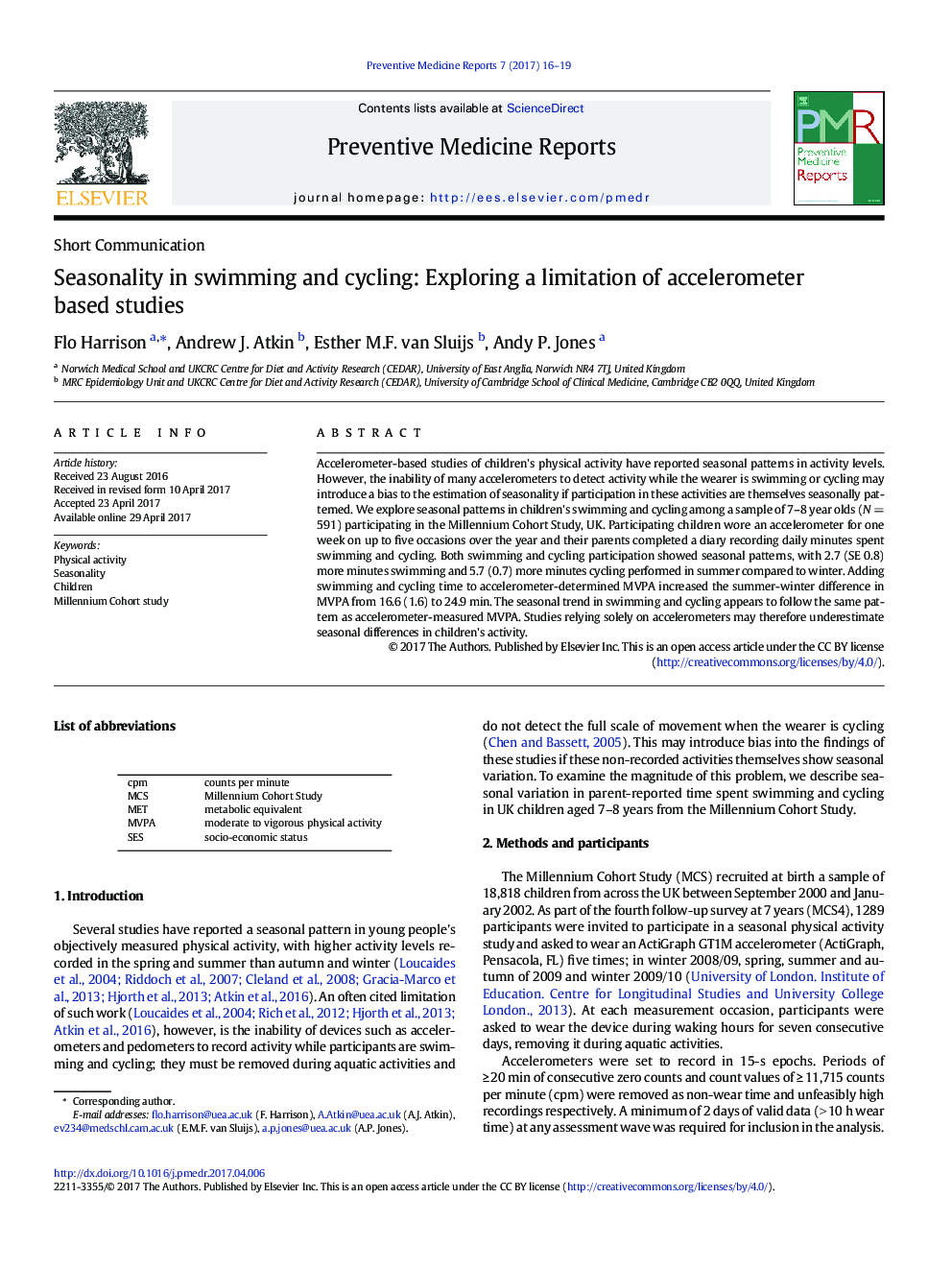| Article ID | Journal | Published Year | Pages | File Type |
|---|---|---|---|---|
| 5723732 | Preventive Medicine Reports | 2017 | 4 Pages |
â¢Children's physical activity is higher in spring/summer relative to autumn/winter.â¢Accelerometers cannot detect activity while the wearer is swimming or cycling.â¢Parent-reported time spent swimming and cycling also varies seasonally.â¢Accelerometer-based studies may underestimate seasonal differences in activity.
Accelerometer-based studies of children's physical activity have reported seasonal patterns in activity levels. However, the inability of many accelerometers to detect activity while the wearer is swimming or cycling may introduce a bias to the estimation of seasonality if participation in these activities are themselves seasonally patterned. We explore seasonal patterns in children's swimming and cycling among a sample of 7-8Â year olds (NÂ =Â 591) participating in the Millennium Cohort Study, UK. Participating children wore an accelerometer for one week on up to five occasions over the year and their parents completed a diary recording daily minutes spent swimming and cycling. Both swimming and cycling participation showed seasonal patterns, with 2.7 (SE 0.8) more minutes swimming and 5.7 (0.7) more minutes cycling performed in summer compared to winter. Adding swimming and cycling time to accelerometer-determined MVPA increased the summer-winter difference in MVPA from 16.6 (1.6) to 24.9Â min. The seasonal trend in swimming and cycling appears to follow the same pattern as accelerometer-measured MVPA. Studies relying solely on accelerometers may therefore underestimate seasonal differences in children's activity.
